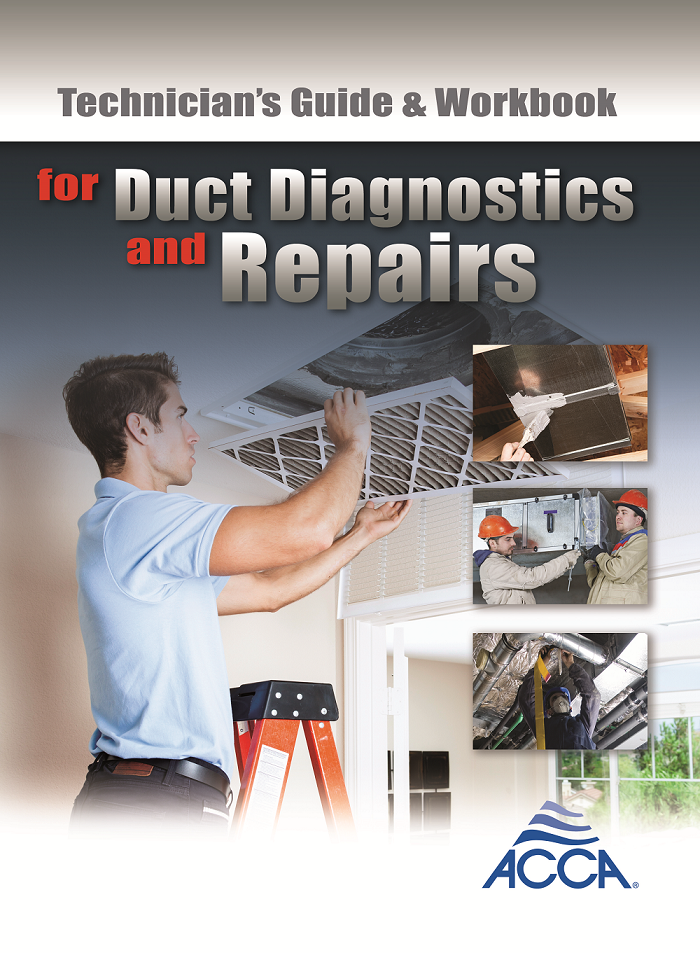We have written before that round spiral duct should be your first choice for a rooftop HVAC duct system. The round shape reduces snow accumulation and accelerates rain runoff compared to rectangular ducts.
The most important factor in much of the country is that a round duct must resist only 40 percent of the wind force that a rectangular duct system must be designed for. But the advantages of round spiral duct go far beyond that. Did you know that using spiral duct can reduce the number of duct supports you need, as well as reduce the structural size necessary?
You’ve probably seen recommendations that tell you to space duct supports 8 to 10 feet apart and 12 feet or more apart for round ducts. There is a reason for the difference. A duct section has been described as “a box section beam of considerable strength.” Round tubes make a stronger beam than square or rectangular profiles of the same dimension and thickness. But one other point is often overlooked. The weakest aspect of that “box section beam” are the joints between the segments.
The joining methods may range from a few screws up to welded and bolted flanges. There is no comprehensive research that sets support spacing for every combination of duct size, shape, gauge and joining method. But the underlying “common sense” behind those recommendations is pretty simple: have no more than two duct joints between supports. That explains the 8 to 10 feet apart recommendation when you are installing 4 and 5 foot joints of rectangular duct. And round spiral duct is typically provided in 10 foot lengths and greater. More joints equals more supports.
The other factor is weight. Round spiral ducts are generally 30 percent less weight than equivalent rectangular ducts. Since gravity is the first force you must design for in a roof support system, you can see where a lighter duct will be desirable.
FAQs
I get a lot of questions about how to design a duct support system. We do see some engineers try to address them on the contract drawings, but most jobs leave them to the discretion of the contractor. Fortunately, there are some rules. And if you follow them and take these steps in order, you should have a duct support system that is sufficient to meet the loosely defined “industry standard.” There will be additional requirements if you have wind and seismic considerations.

Above is an example rooftop duct layout. It has both rectangular and round ducts. And as you go through the exercise you can imagine how this duct support system would be different if you used a 60-inch round duct instead of the 96 inch x 32 inch duct shown.
- Start at your fan/air handling unit. Locate your first support about 2’-0” from the discharge. This prevents the duct weight from affecting the mechanical connection of duct to unit.
- Locate a support within 2’-0” of the ends of any elbows (including the elbows that may be turning vertically to penetrate the roof).
- Use an intermediate support on elbows where the center line length plus 4’-0” is greater than the support spacing for the duct type. Also, offsets are elbows. If you have vertical or horizontal offset ducts, locate supports within 2’-0” of the ends.
- Locate supports within 4’-0” of any branches. That applies to the inlet, straight-through outlet and branch outlet sides.
- Now that you’ve made it this far, you should be left with nothing but straight segments of duct. Based on the shape of the duct and the length of your duct joints, you can now start locating the rest of your supports. For 4’-0” sections of rectangular duct, maintain a spacing of not more that 8’-0”. For 5’-0” sections of rectangular duct, maintain a spacing of not more than 10’-0”. For round duct maintain a spacing of not more than 12’-0”.
- Please use a little common sense with these guidelines. If you are supporting 5’-0” lengths of rectangular duct and you have a span that is 10’-6”, you really don’t need to use two supports. Remember, the real reason behind these span recommendations is to have no more than two transverse duct connections between a pair of supports, and that is unlikely to be the case there.
Now that you know where you need to put your duct supports and how many you need, you can start figuring out the parts and pieces you need to make the supports. If you use curbs or equipment rails, these guidelines give you quantities and widths. You will still need to determine height and any hardware to restrain the duct. We see more ducts being put on single-ply flat roofs, and in those cases you want to minimize roof surface penetrations. Non-penetrating rooftop support systems use plastic or rubber feet to distribute duct weight. Size can matter, because those feet turn “pounds into PSI”. You should know the allowable PSI for mechanical equipment based upon roof construction. Most support manufacturers have more than one size, and you can choose based upon your duct weight and the allowable PSI.
Things to consider
Many duct supports use structural sections and hardware such as U-channel strut, angle brackets, nuts and bolts. The allowable deflection for a horizontal support beam is L/240. If the beam is 60” wide, it can deflect no more than ¼”. Recommended practice is, once you come up with a duct support layout, number your supports, then figure out exactly what you have sitting on each one. There are a lot of sources for weight charts for ducts. If the one you are looking at is 8’-0” from the next support one way and 4’-0” from the next support the other way, you can consider that it is holding up 6’-0” of duct (the sum of half the distances). That weight will dictate the size of “feet” you need. That weight and the support width determine your beam deflection. For large ducts you may need something heavier than a standard U-channel strut or more than two “feet” in your support.
Don’t forget, your duct support system will be much simpler if you use round spiral duct instead of rectangular. It is probably well worth it to pay for that square-to-round coming right off the unit. You’re going to need less supports. And they don’t have to be as wide either. Why — other than “that’s the size of the hole in the unit”— did you need that 96” x 32” duct anyway when a 56” x 56” square or 60” round would have carried the air with the same friction loss? It’s not like you have a height restriction. You’re on the roof. Round spiral duct is going to save you money on the rooftop. Less weight, less labor, less cost — and less duct support.
This article originally appeared in the January 2019 issue of SNIPS magazine.









